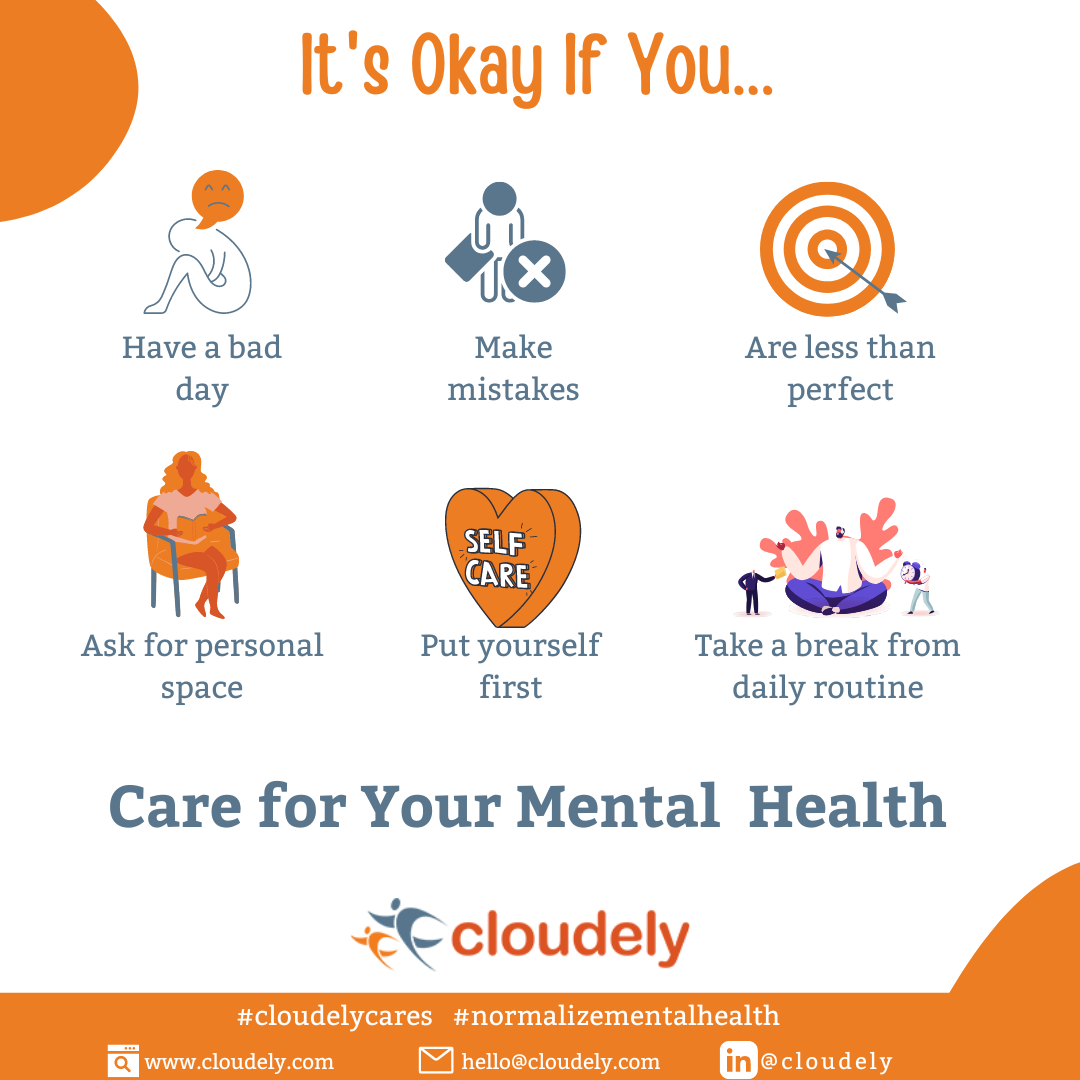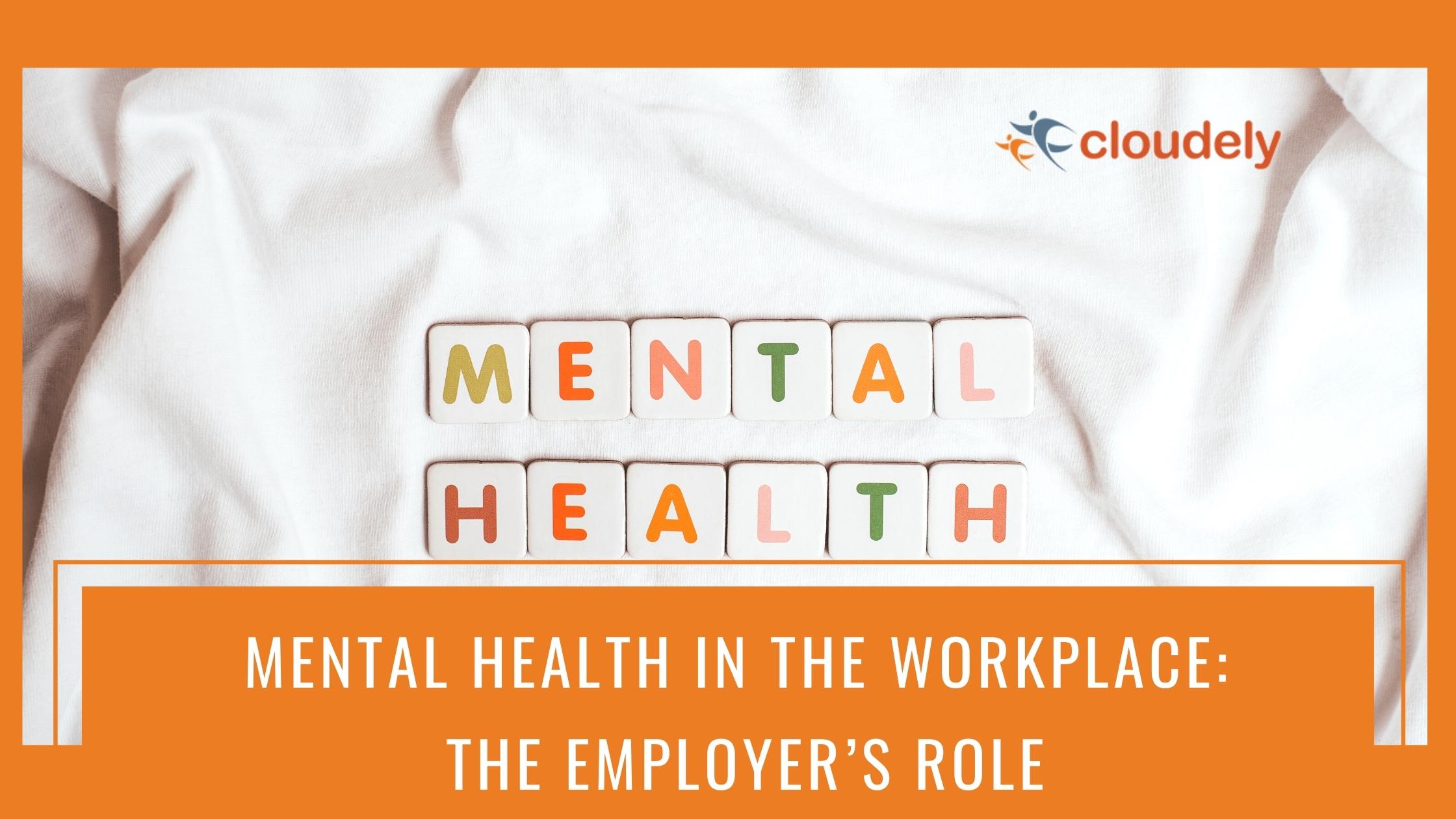Employees play a crucial role in organizational success. On average, an individual spends 90,000 hours at work, finds a study by Gettysburg, which indicates why employers must care for employee mental health. Organizations that care for and promote employee mental health evolve into the most desired employer brands.
This article makes a comprehensive discussion on why employers must promote mental health in the workplace and the strategies for the same. We will also discuss practical examples of employee mental health that narrate how to deal with and overcome the real-time challenges of promoting mental health in the workplace.
Table of Contents
The necessity of promoting mental health in the workplace
Mental health impacts how employees think, engage, and react in the workplace. It can influence their productivity and enthusiasm to mingle with co-workers, communicate with the team and managers, participate in work-related events and preserve workplace safety.
The benefits for an organization of having employees with good mental health are diverse.

As Steve Flanagan, Commercial Director, Bupa believes – “Improving the health and well-being of our employees makes good business sense. It offers a “win-win” all round. Employees benefit from better support for their health. Companies benefit from less absence and improved productivity.”
Employees with poor mental health can create issues that range from individual to team-related.
Poor mental health in employees leads to:
- Reduced productivity
- Physical health issues such as hypertension, diabetes, and heart problems.
- Inactivity in the daily work routine
- Elevated frustration
- Disengagement towards work
If ignored, this can lead to unwanted effects for the employee and the team.
Poor employee mental health can create contagious negativity in the workplace. It can demotivate the rest of the team members and ultimately hampers the work culture.
On the other hand, the cost businesses incur due to poor employee mental health is notable. Statistics about mental health and the workplace that confirm this:
- A CNBC study finds that mental health affects the productivity of 61% of workers.
- According to World Economic Forum, 37% of workers agreed that the workplace contributes to their mental health.
- The Center for Prevention and Health Services estimates that mental illness and substance abuse issues indirectly cost employers approximately $79to $105.
Promoting employee mental health falls under legislative compliance too. The Canadian Centre for Occupational Health and Safety indicates that employee mental health is imperative for employers following the following legislation:
- Definition of harassment and violence
- Purpose of the Act
- Definition of health and safety
- Definition of injury
- Workplace enhancement to address the well-being of the employee
Employees with poor mental health can display signs of discontentment and frustration. Absenteeism, inactivity or disinterest during meetings and events, substance use, and too frequent sharp tone while communicating with colleagues are some indicators that the employee needs help with their mental health.

Here are sample scenarios from SHRM experts that explain how to identify mental health-related issues in employees:
Mental Health in the Workplace: Scenario #1
Sam has been a productive and enthusiastic employee for more than 3 years. He suddenly raises a request for a pay raise in the off-season cycle.
This could indicate financial stress in his personal life, maybe an unemployed partner, or added expenses straining him emotionally.
What you can do as an employer?
Talk to him on friendly terms to gather the details. Appraise his performance and offer promotion with a hike and more responsibilities. It is a win-win for both him and you as an employer, as a proven employee sticks with your organization, and his financial needs are met too.
Mental Health in the Workplace: Scenario #2
Peter is an easy-going and friendly employee. Of late, his irritation levels seem frequent, and he keeps displaying anger by shouting and throwing things.
This could indicate some deep personal disgruntlement or mental health issues.
However, in such cases, de-escalating and calming down things is the first step.
What can you do as an employer?
Mental health in employees can be a sensitive issue. Asking “Are you are on meds?”, or suggesting “You must control your anger”, can sound inappropriate.
Instead, implement the following pointers to identify poor mental health in employees.
- Initiate a discussion about employee mental health relating to the questions that concern employee productivity and professional behavior.
- Refrain from asking questions related to personal relationships or medical diagnosis.
- Be present when employees like to open up and fully listen to them with an empathetic ear rather than trying to offer a solution right away.
- Leave the choice to the employee whether they would like to seek your advice/help or they want you to listen to relieve their burden fully.
- To assess the employee’s mental health, exit interviews, analyzing the work reports in the previous organizations, previous incident investigations, and assessment of short term and long term disability also help.
Workplace related factors that degrade employee mental health
While mental health is a result of physical, personal, and social health, here are certain workplace-related factors that can impact employee mental health:
Burnout
One of the prime reasons that drain an employee’s mental health is workplace burnout. The excessive workload that erases the thin line between personal and professional lives can act as a hurdle for employee happiness and mental health.
Inability to meet job expectations: When employees are unsure of their duties or job descriptions are inadequate, they tend to question their abilities and feel discontent about their work performance which can ultimately stress them out.
Pay dissatisfaction
Financial stress in their personal lives can trigger employees to compare their current earnings and feel dissatisfied if their pay is lower than the market value. This dissatisfaction reflects in their quality of work and commitment to the organization.
Toxic work culture
Workplaces that fail to value, motivate, and recognize hardworking employees can demotivate their morale. In addition, harassment, violence, bullying, and mobbing can impair employee mental health.
Lack of support
Workplace friends and supportive measures from management can promote employee mental health. In their absence, employees might feel deserted with no shoulder to lean on in times of emotional and mental crises.
Job uncertainty
A study by the NSW Government finds that the risk of employee mental ill-health rises by up to 30% when they feel insecure about their job.
Favoritism and unfairness
Unfair workplaces and special treatment to certain employees can create insecurity and dissatisfaction in other employees.
Poor communication and change management
Taking employees by surprise might stress many in practice. Lack of communication, transparency, and change management strategies can negatively impact employee mental health.
Strategies to promote mental health workplace
Promoting employee mental health must be one of the continuous efforts in an organization. It involves the participation of teams, management, leadership, and the HR teams in a greater role.
Here are actionable strategies organizations can implement to promote mental health in the workplace.
Eliminate the stigma
Despite the necessity to have an open discussion, mental health in the workplace is still a stigma. Employees fear many probable side effects such as fear of being considered incapable or losing their job.
Employers must hence encourage open discussions about mental health in the workplace. Inclusion of workplace safety and mental health programs in compliance with the country’s regulations are the first step to start with the measures to promote mental health in the workplace.
The Human Resources team can carry this forward through a series of regular activities, initiatives, and policies to promote the personal empowerment and growth of employees.
Organize mental health-related events
Regular mental health-related events conducted by experts educate and empower employees.
At most times, stress beyond the limit can cause poor mental health. Expert guidance for stress management and identification of the symptoms of poor mental health can help employees. In the long run, such activities help in employer branding besides eliminating the costs of employee mental health.
Encourage health and wellness in the organization
Promote employee mental health by encouraging healthy eating, creating awareness on exercising and regular physical activities, yoga, and meditation.
Providing facilities like a gym and sports on the office premises reminds employees to care for themselves.
Alternatively, gym and spa subscriptions, and birthday and anniversary gifts that align with health and wellness are great options to promote mental health in the workplace.
Enable regular mental health assessments
Often, the symptoms of poor mental health are latent. Early identification and expert intervention can avoid mental health risks.
Self-assessment of mental health through expert-designed questionnaires and mental health assessment tools helps employees assess their mental health.
Encourage positive work culture and a support system
Train leaders and managers to be empathetic and lend a patient ear to their peers and team members. Provide the necessary tools, resources, and knowledge for teams to identify and help employees with mental health issues.
Additionally, the measures mentioned below can make an employee happy and promote their mental health:
- Create and nurture a work environment where employees feel heard and valued.
- Encouraging employee learning and career growth
- Giving flexibility in working hours and remote or work from home opportunities to promote healthy work-life balance
- Include employees in decision-making and encourage fairness and transparency.
Summing Up
Employee mental health is one of the least ignored aspects of the workplace. The above-mentioned strategies to promote employee mental health make the workplace a safer, happier, and desired one.
About Cloudely
Cloudely helps global organizations build great teams and leverage technology. To empower your business with the brightest minds in tech and cut costs with technology solutions, reach us at hello@cloudely.com. Connect with us on LinkedIn to know more about our work culture, tech capabilities, and partnership ideologies.






